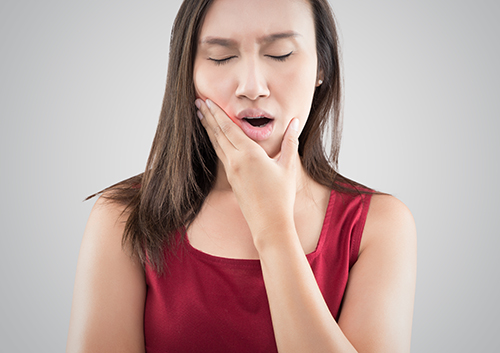Water Features
June 1st, 2022

Heading for the beach! Hiking to the lake! Keeping cool with a tall, frosty glass of ice water in a foreign bistro, or taking a refreshing gulp from the fountain in the park! Hot weather has arrived, and water is something we’re more conscious of now than most other times of the year. Even so, water as a dental feature? Glad you asked!
- Recreation
Whether you want to bask in the heat or escape it, heading out for a day in or on the water works. And while you’re protecting your skin with sunscreen, think about protecting your teeth and mouth as well. With one small slip, any physical water sport—water skiing, water polo, surfing—can result in damage to your teeth or jaw. Bring—and use—the mouthguard you wear for sports like basketball or biking, and make sure you have a summer of smiles ahead of you.
- Refreshment
Summer has a beverage menu all its own. Iced coffee and iced tea, a cooler full of sodas, fresh lemonade, fruity cocktails—so many refreshing ways to beat the heat! And we would never suggest that you turn down every frosty summer temptation. But do be mindful that dark beverages like tea, coffee, and sodas can stain teeth, sugary and acidic ones are damaging to your enamel, and alcoholic drinks can be dehydrating. Water, on the other hand, is always a healthy choice. It’s helpful for keeping your mouth and teeth clean, it often contains the fluoride that helps fight cavities, it’s hydrating—and, it has no calories! Be sure to make water a significant part of your summer beverage menu, and your body will thank you for it.
- Rinse & Restore
Water’s importance to our bodies can’t be overstated! From major organs to individual cells, we need water. And one major benefit of proper hydration is healthy saliva production. Why is that important? Saliva plays a vital role in preventing cavities. It washes away the food particles that oral bacteria feed on, reducing their ability to produce the acids that lead to enamel erosion and cavities. Saliva even helps neutralize acids already in the mouth. Finally, saliva contains important calcium, phosphate and fluoride ions which actually help restore enamel strength after it has been exposed to oral acidity.
Summer goes by all too quickly. Protect your teeth during these warm, active months with a mouthguard. And whether you spend your free time outdoors, or visiting people and places, or keeping cool at home, be mindful of dental-friendly beverage options and always stay hydrated. You’ll be ready to greet fall with a beautiful smile and healthy teeth. “Water Features”? Perhaps a better title would be “Water Power”!





 Website Powered by Sesame 24-7™
Website Powered by Sesame 24-7™